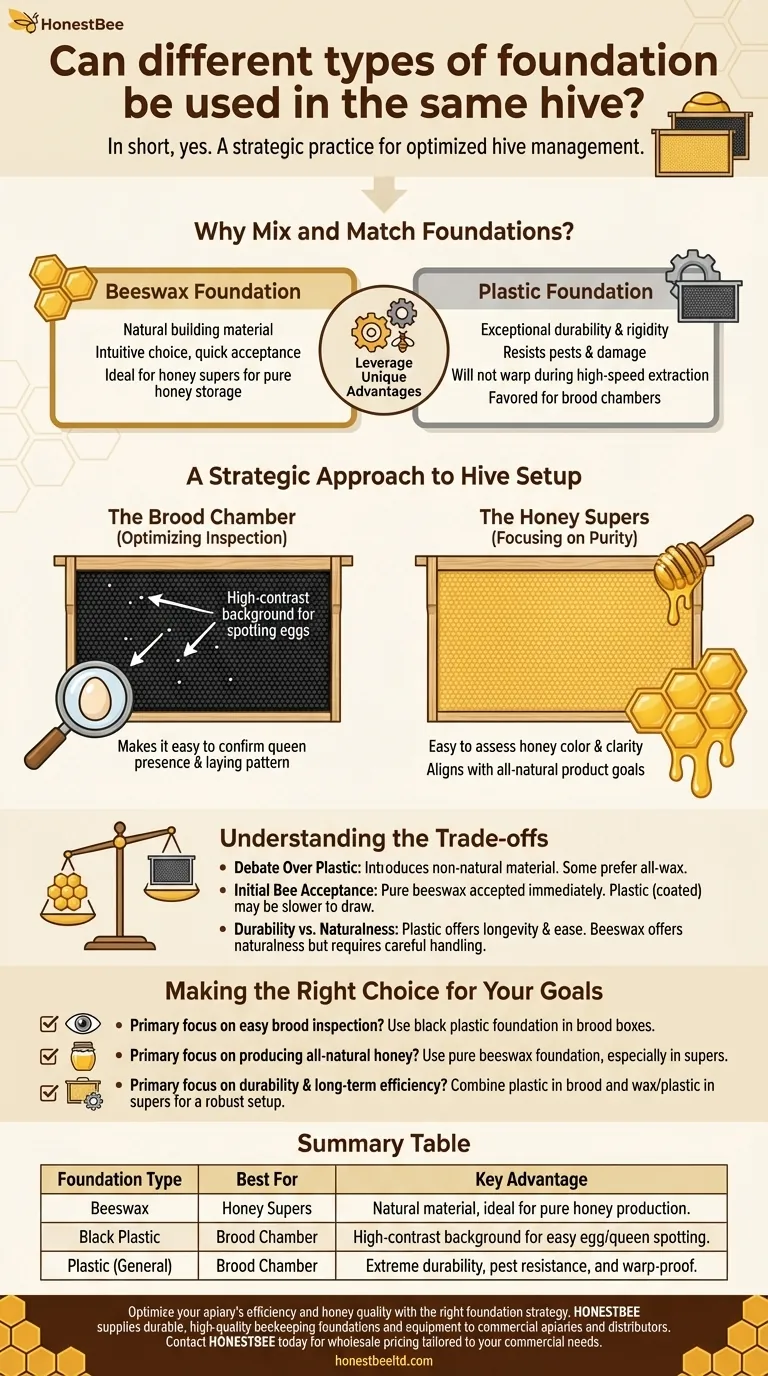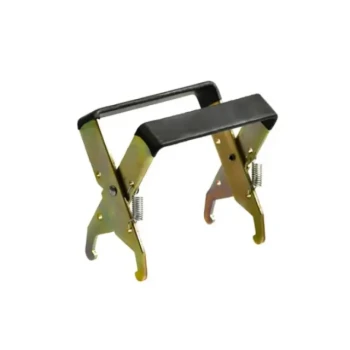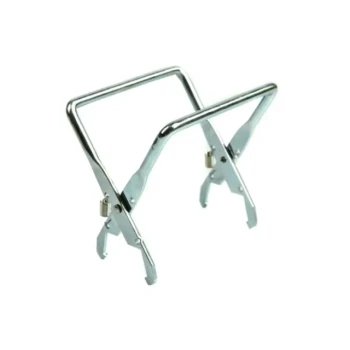In short, yes. You can absolutely use different types of foundation in the same hive, even within the same box. This is not a compromise but a common and strategic practice used by experienced beekeepers to optimize hive management, from brood inspection to honey harvesting.
The core principle is not about which foundation is universally "best," but which is best for a specific purpose. Mixing foundation types allows you to leverage the unique advantages of different materials—like the visibility of plastic or the natural appeal of wax—in the parts of the hive where they provide the most value.

Why Mix and Match Foundations?
The two dominant materials for hive foundations are traditional beeswax and modern plastic. Each serves a distinct purpose and offers unique advantages that you can harness by placing them strategically.
The Case for Beeswax Foundation
Beeswax is the bees' natural building material, making it the most intuitive choice. Bees typically draw out comb on beeswax foundation with little hesitation.
Many beekeepers prefer using pure wax, often reinforced with wire for stability, in their honey supers to ensure the final product is stored on a completely natural material.
The Practical Advantages of Plastic
Plastic foundation is valued for its exceptional durability and rigidity. It resists damage from pests like wax moths and will not warp or blow out during high-speed honey extraction.
This reliability makes it a favored choice for many beekeepers, especially in the brood chamber where frames are handled frequently for inspections.
A Strategic Approach to Hive Setup
A popular and effective method involves using different foundations for the two primary sections of the hive: the brood chamber and the honey supers.
The Brood Chamber: Optimizing for Inspection
The primary goal in the brood chamber is monitoring hive health, which starts with seeing the queen's work. Using a black plastic foundation provides the perfect high-contrast background for spotting tiny, white bee eggs.
This makes it significantly easier to confirm that your queen is present and laying a healthy, consistent pattern, which is a critical indicator of colony strength.
The Honey Supers: Focusing on Purity
In the honey supers, the goal shifts to honey production. Here, many beekeepers prefer to use a white or natural-colored foundation.
A white background makes it easy to assess the color and clarity of the honey. Using pure beeswax foundation in the supers also aligns with the goal of producing a completely natural product with minimal contact with plastic.
Understanding the Trade-offs
Choosing a foundation material involves balancing practicality with philosophy. There is no single correct answer, only what works best for your management style.
The Debate Over Plastic
The primary concern with plastic foundation is the introduction of a non-natural material into the hive. While these products are made from food-grade plastic, some beekeepers prefer an all-wax, traditional approach.
Initial Bee Acceptance
Bees will almost always accept pure beeswax foundation immediately. While most plastic foundations come with a thin coating of beeswax, colonies can sometimes be slower to begin drawing comb on them compared to pure wax.
Durability vs. Naturalness
The core trade-off is simple. Plastic offers longevity, ease of use, and resistance to damage. Beeswax offers a more natural medium that bees readily accept but requires more careful handling to prevent warping or breakage.
Making the Right Choice for Your Goals
Your foundation strategy should be a conscious decision based on your beekeeping priorities.
- If your primary focus is easy brood inspection and hive health: Use black plastic foundation in your brood boxes to make spotting eggs effortless.
- If your primary focus is producing all-natural honey: Use pure beeswax foundation, especially in your honey supers, to keep the final product on a natural base.
- If your primary focus is durability and long-term efficiency: A combination of plastic in the brood chamber and wax or plastic in the supers provides a robust and reliable setup.
Ultimately, using the right foundation in the right place empowers you to manage your hives with greater precision and confidence.
Summary Table:
| Foundation Type | Best For | Key Advantage |
|---|---|---|
| Beeswax | Honey Supers | Natural material, ideal for pure honey production |
| Black Plastic | Brood Chamber | High-contrast background for easy egg/queen spotting |
| Plastic (General) | Brood Chamber | Extreme durability, pest resistance, and warp-proof |
Optimize your apiary's efficiency and honey quality with the right foundation strategy. HONESTBEE supplies durable, high-quality beekeeping foundations and equipment to commercial apiaries and distributors. Let our wholesale-focused expertise help you build a more productive and manageable operation.
Contact HONESTBEE today for wholesale pricing on foundations and equipment tailored to your commercial needs.
Visual Guide

Related Products
- Food Grade Plastic bee Foundation for Bee Frames
- Beeswax Foundation Sheets Beehive Foundation for Wholesale
- Notebook Style Beeswax Foundation Mould Wax Foundation Mold
- Durable Rubberized Comfort Handle Frame Grip
- Durable Galvanized Steel Frame Grip
People Also Ask
- How to get bees to use plastic foundation? Master the Wax Coating and Resource Strategy
- Does plastic foundation affect honey quality or taste? A Practical Guide for Beekeepers
- How to get bees to draw out plastic foundation? Boost Comb Building with Proven Tactics
- How do you get bees to draw out plastic foundation? Master the Art of Comb Building
- Why do commercial beekeepers prefer plastic foundation? Durable, Reusable, and Cost-Effective



















